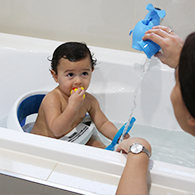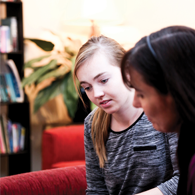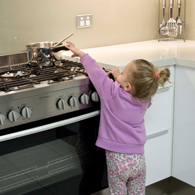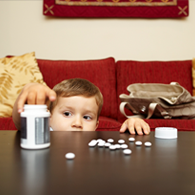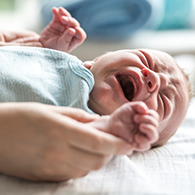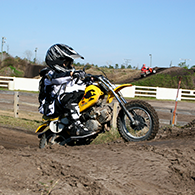Experts warn; "Don’t let your child be a drowning statistic"
Experts are warning parents to be extra vigilant when supervising their children in and around water after study reveals drowning is one of the leading causes of accidental death in children. The NSW Study of Drowning and Near-Drowning in Children (0-16) conducted by the Sydney Children’s Hospital Network has discovered 68% of children aged 0-4 years old had a non-fatal incident while the child was unsupervised by an adult.
Drowning remains one of the leading causes of accidental death in children under the age of five years, with an average of 10 drowning deaths occuring each year in NSW. There is an average of 294 non-fatal drownings in children aged 0-5 years in Australia each year.
Sue Wicks, Kids Health Department Head at The Children’s Hospital at Westmead and one of the authors of the NSW Study of Drowning and Near-Drowning in Children, said close and active adult supervision of children in and around water was the best protection against drowning. "An adult needs to be supervising children at all times regardless if the child knows how to swim," she said. "Everyday tasks such as, attending to another child or getting a towel out of a bag are just some of the daily distractions that lead to a lapse of supervision. All parents and carers must be vigilant and cannot rely on other siblings and children to supervise".
The importance of adult carers learning how to swim and how to perform CPR was also confirmed in the study. Dr Donovan Dwyer, Emergency Specialist and Director of Trauma at Sydney Children’s Hospital, Randwick said, "In an emergency, effective and early CPR can be the difference between life and death. It is most often a family member who finds the child in a drowning incident. Don’t let your child be a drowning statistic – every parent and carer needs to know the lifesaving skills of CPR."
The results of the study highlight the importance of continued education of adult carers in a bid to prevent drowning in children. Four key areas have been identified:
o SUPERVISE: Actively watch children at all times when in or near water.
o SECURE: Ensure that any pool with capacity to be filled with 30cm of water or more has a compliant pool barrier which is adequately maintained and there’s nothing nearby that children can climb on. Empty buckets, wading pools, washing machines after use.
o FAMILIARISE: Teach children water safety and swimming lessons, but don’t rely on them to keep your child safe. It is also important for adults to learn to swim.
o CPR: Learn CPR so you have the skills in case of an emergency. Refresher classes are recommended every 12 months. Remember that any attempt at CPR is better than no attempt.
Other findings of the study include:
Most common locations for non-fatal-drowning incidents for children 0-16 years are swimming pools, baths and public pools.
33% of children gained access to the swimming pool because the pool gate was propped open. Other reasons included using an object to climb over the pool barrier, vertical gaps in the pool barrier greater than 10cm and faulty gate latches.
Nearly half (49%) of the children in the study had a history of swimming or water familiarisation lessons before the incident, but this didn’t prevent a non-fatal drowning.
68% of children aged 0-4 years had a non-fatal drowning incident while the child was unsupervised by an adult. In almost half of these cases, the parent or adult carer was aware that the child was in or near the water. The NSW Study of Drowning and Near-Drowning in Children (0-16) interviewed families of children who presented to or were admitted to The Children’s Hospital at Westmead, Sydney Children’s Hospital, Randwick and John Hunter Children’s Hospital, New Lambton Heights for a drowning incident during the period 1 July 2015 to 31 March 2018.
For more information on drowning prevention, how to order resources and to do free online CPR training, visit kidshealth.org.au/drowning-prevention.
-ENDS-
Media Contacts:
Sheri Locmayon, The Children’s Hospital at Westmead P: (02) 9845 3572
Katherine Taperell Sydney Children’s Hospital, Randwick P: (02) 9832 3571
Tagged in:
